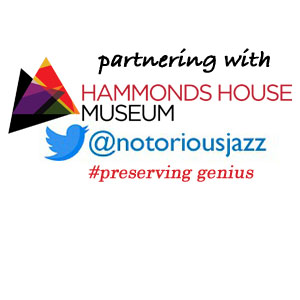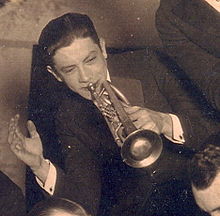
Daily Dose Of Jazz…
Emmett Louis Hardy was born in Gretna, Louisiana on June 12, 1903 and lived much of his life in the Algiers neighborhood on the west bank of New Orleans, Louisiana. A child prodigy, he was playing marvelously in his early teens. A musical highlight was a 1919 cutting contest where, after long and intense struggle, he succeeded in outplaying Louis Armstrong.
In his early teens he was a member of the Papa Jack Laine band, then worked in the Carlisle Evans Band and Norman Brownlee’s Orchestra of New Orleans. He belonged to a small band that worked with singer Bee Palmer. After moving to Chicago, Illinois he became a member of the New Orleans Rhythm Kings. After returning to New Orleans he led his own band and played in the band of Norman Brownlee.
Hardy did not appear on any of the Rhythm Kings recording sessions, and never made any commercial recordings before his early death. He did metal work, made his own mouthpieces for his horn, and modified his cornet to add an additional spit-valve. When advancing tuberculosis started to make his breathing difficult, Hardy taught himself banjo so he could continue playing music.
Hardy and some of his musician friends made some home recordings on wax phonograph cylinders for their own amusement. As Hardy’s tuberculosis worsened and his death seemed inevitable, the friends decided to preserve the cylinders as a memento of Hardy’s playing. At least one cylinder survived to the start of the 1950s, however when Tulane University’s Jazz Archive was established in the late 1950s, however, a diligent search failed to turn up any of these recordings, which are, alas, presumed lost forever.
After returning to New Orleans he led his own band and played in the band of Norman Brownlee. Though he never recorded with Brownlee, he was a big influence on his replacement, Sharkey Bonano. Cornetist Emmett Hardy passed away from tuberculosis in New Orleans, just four days after his 22nd birthday on June 16, 1925. He was buried in Gretna.
More Posts: bandleader,cornet,history,instrumental,jazz,music
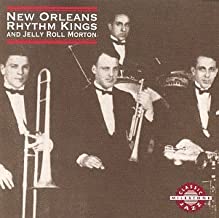
Daily Dose Of Jazz…
Louis Thomas Black was born on June 8, 1901 in Rock Island, Illinois and began playing banjo during early childhood. He became a professional musician in 1917.
By 1921 he had joined the famous New Orleans Rhythm Kings at Friar’s Inn in Chicago, Illinois. With this band, he participated to the first-ever interracial recording session with pianist Jelly Roll Morton.
Leaving the band in 1923, Lou went on to play with other bands. From 1925 until 1931, he was a staff musician for radio station WHO in Des Moines, Iowa. He left music in the early 1930s, but came back and began playing in 1961. He sat in with several bands during a brief stay in New York City, then played gigs in Moline, Illinois from the fall of 1963.
An automobile accident landed him in a Rock Island hospital and while recovering from his injuries, he suffered a fatal heart attack. Lou Black, who often went by Lew or Louie and was one of the foremost banjo players of the Jazz Era, passed away on November 18, 1965.
More Posts: banjo,history,instrumental,jazz,music
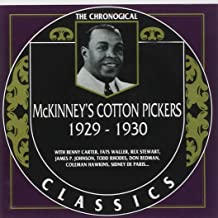
Daily Dose Of Jazz…
Edward Emerson Cuffee was born on June 7, 1902 in Norfolk, Virginia. He moved to New York in the 1920s, where he recorded with Clarence Williams from 1927 to 1929 and played with Bingie Madison.
Playing in McKinney’s Cotton Pickers from 1929 to 1934, he moved to Fletcher Henderson’s band for three years beginning in 1935. Ed went on to play with Leon Abbey in 1940 and subsequently through the decade with Count Basie, Chris Columbus and Bunk Johnson.
He quit playing professionally after the late 1940s. Trombonist Ed Cuffee passed away on January 3, 1959 in New York City.
More Posts: history,instrumental,jazz,music,trombone
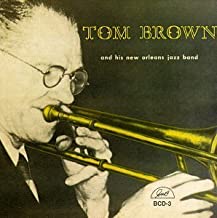
Daily Dose Of Jazz…
Tom Brown was born in Uptown New Orleans, Louisiana on June 3, 1888. He played trombone with the bands of Papa Jack Laine and Frank Christian, and by 1910 he was usually working with leading bands under his own name. The band played in a style then locally known as “hot ragtime” or “ratty music”. In early 1915, his band was heard by Vaudeville dancer Joe Frisco who then arranged a job for Brown’s band in Chicago, Illinois.
Tom Brown’s Band from Dixieland opened up at Lamb’s Cafe in Chicago, this band seems to be the first to be popularly referred to as playing Jass. The term jass, at that time, had a sexual connotation, which drew more people to come to hear the band out of curiosity. Realizing the publicity potential he started calling his group Brown’s Jass Band.
Heading to Chicago, Illinois he enjoyed over four months of success there before moving to New York City, where they played for an additional four months more prior to returning to New Orleans in 1916. Once home, Tom immediately put together another band with Larry Shields, Alcide Nunez, and Ragbaby Stevens, then went to work for Bert Kelly in New York City, replacing the Original Dixieland Jass Band at Reisenweber in 1918. He started doing freelance recording work with New York dance and novelty bands, then joined the band of Harry Yerkes.
Brown also played the Vaudeville circuit in the acts of Joe Frisco and Ed Wynn. Late 1921 he returned to Chicago and joined Ray Miller’s Black & White Melody Boys, with whom he made more recordings. During this period he also co-lead a dance band with his brother Steve. Back in New Orleans he played with Johnny Bayersdorffer and Norman Brownlee’s bands, making a few excellent recordings.
During the Great Depression he supplemented his income from music by repairing radios. He opened up a music shop and a junk shop on Magazine Street. He played string bass in local swing and dance bands. With the revival of interest in traditional jazz he played in various Dixieland bands in the 1950s. Making his last recording just weeks before his death, his trombone playing apparently did not suffer from the fact that he had neither teeth or dentures at the time. Trombonist Tom Brown, who also played string bass, passed away in New Orleans on March 25, 1958.
More Posts: bandleader,history,instrumental,jazz,string bass,trombone

Daily Dose Of Jazz…
Orie Frank Trumbauer was born on May 30, 1901 in Carbondale, Illinois, Trumbauer grew up in St Louis, Missouri, the son of a musical mother who directed saxophone and theater orchestras. His first important professional engagements were with the Edgar Benson and Ray Miller bands, shortly followed by the Mound City Blue Blowers, a local group that became nationally famous through their recordings on Brunswick.
Trumbauer recruited Bix Beiderbecke for Jean Goldkette’s Victor Recording Orchestra, of which he became musical director. After leaving Goldkette, he and Beiderbecke worked briefly in Adrian Rollini’s short lived New Yorkers band, then joined Paul Whiteman in 1927. In 1927, he signed a contract with OKeh and released a 78 recording of Singin’ the Blues. Originally recorded and released by the Original Dixieland Jass Band in 1920, the Okeh recording became a smash hit. Fletcher Henderson and His Orchestra would record it in 1931 in the Trumbauer-Beiderbecke version.
He played with Whiteman for eight of the following nine years. Frank had a separate contract with OKeh from 1927 through 1930, where he recorded some of the most legendary small group jazz recordings of the era with Brunswick, Columbia, and Victor.
Leading The Three T’s, featuring the Teagarden brothers in 1936, two years later he and Mannie Klein co-led a band. In 1940 he left music to use his pilot skills to join the Civil Aeronautics Authority. Frank became a test pilot during World War II he was a test pilot with North American Aviation, and trained military crews in the operation of the B-25 Mitchell bomber. He continued to work for the CAA after the war, and also played in the NBC Orchestra. After 1947, although he continued to play and record, he earned most of his income in aviation.
Saxophonist, bassoonist, clarinetist and composer Frank Trumbauer, who was the influence for Lester Young, passed away of a sudden heart attack on June 11, 1956 in Kansas City, Missouri, age 55.
More Posts: alto saxophone,bassoon,C-melody saxophone,clarinet,history,instrumental,jazz,music


